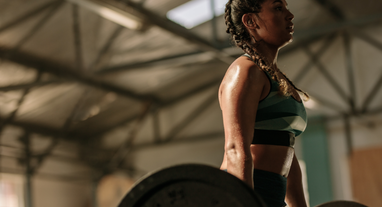5 gym pitfalls to avoid

It would only happen to you in the gym, that when you step on the crosstrainer, you miss the step with one foot and then lie on the other side. A mistake can happen, but of course it is not looking chic. There are several ways to get it wrong in the gym: for example when you want to lift too much weight in one go and then end up not even getting the weight off the ground. All beginnings are difficult and the longer you work out, the more knowledge you gain about fitness, nutrition and everything related to it. In this blog we explain what the 5 most common mistakes are in the gym. Make sure you are well prepared in the gym and read on quickly.
1. Going too fast in the gym
It is obvious, but it is better to use a slightly lighter weight than one that is too heavy. You probably think when you read this, everyone knows that, right? But it is one of the most common mistakes, even for an experienced athlete. It is incredibly motivating to grab a heavier weight or to be able to do more reps with the same weight. This quickly leads to a sacrifice of good technique and execution . So always make sure that your execution is perfect. Is your technique getting worse or do you notice that you have to compensate with other muscles? Then rather take a lower weight and train until muscle failure .
2. Stick to a training schedule
It is human nature to hold on to habits. This can be a good quality, however, when it comes to training it can be counterproductive. If you always train at the same intensity, your body will get used to this intensity. The result is that your muscles are not stimulated enough. If you want to prevent this, it is recommended to go for a new training schedule. Do you currently train following a split schedule? Then start following an upper and lower body training schedule. For example, take your exercises in a different order, first a leg press followed by a squat exercise, instead of the other way around. There are countless of ways to vary. When should you vary? That depends on you. It is recommended to implement a different training schedule around every 8 to 12 weeks. Are you no longer making progress, while your nutrition and training is on point? Then also change your schedule.
3. Not enough exercises with free weights
You will not be the first to walk into the gym, row for 15 minutes, follow a circuit and then cool down with a 5-minute walk. Nothing wrong with that, but what you want is to stimulate as many muscles as possible.Therefore, when you design a new training schedule, you want to include as many exercises with dumbells and barbells as possible.. That way you address the most muscles. Start with compound exercises such as the squat, bench press, deadlift and shoulder press. Gradually reduce this until you (possibly) end with the isolation exercises.
4. Not enough rest
Your working day is over and you're ready: off to the gym! Of course, that is the best thing you know and you prefer to do this every day. However, this is not recommended. Before you know it, you are overloading your muscles. It is therefore also best to take sufficient rest. That means, rest days. For example, do you train full body? Then there must be at least 24 - 48 hours between your workouts after each workout. Otherwise you will overload your muscles again. With a split schedule this is different. If you train your legs on Monday, you can go to the gym again on Tuesday for a chest workout with your shoulders or triceps.
5. Leg-day?
The vast majority of people in the gym focus mainly on chest day, while it is actually much better to put extra focus on leg day. When you train the legs, you train the largest muscle in your body, the gluteus maximus, the big butt muscle. This requires much more from your body than performing isolation exercises. Exercises you can think of are the squat, deadlift and the hip thrust. As a result, your body is much more balanced: only training your upper body creates an imbalance. A fully trained body not only looks better, but can handle more. Finally: because the legs are such a large muscle group, you also burn more during your training!




